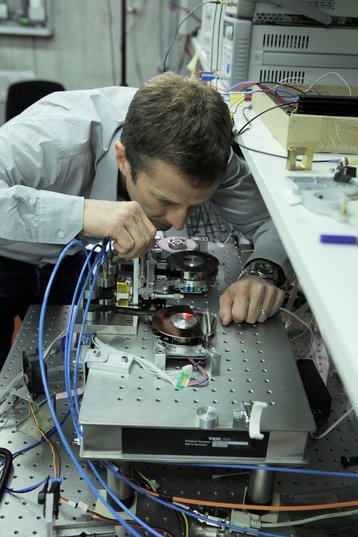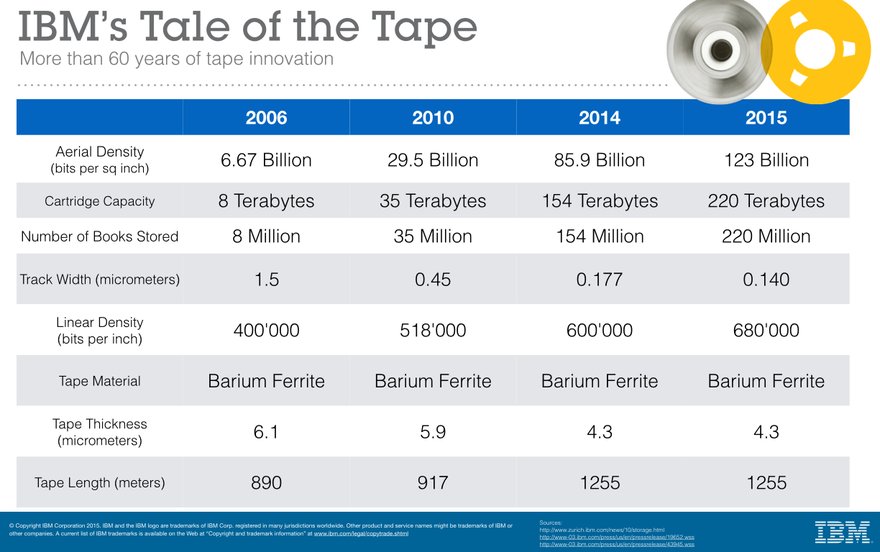IBM Research and Fujifilm have developed a magnetic tape prototype called Nanocubic, with a recording density of 123 billion bits per square inch.
This technology could allow tape cartridges with raw capacity of up to 220TB – that’s 22 times more storage space than IBM’s current enterprise-class tape product.
“With this demonstration, we prove again that tape will continue to play an important role in the storage hierarchy for years to come,” said Evangelos Eleftheriou, IBM Fellow. “This milestone reaffirms IBM’s continued commitment and leadership in magnetic tape technology.”
Tape not dead
Magnetic tape was invented in 1928, and first used for storing computer data by the Univac 1 in 1951. It offers long access times and slow data transfer rates, but it is by far the most cost-efficient way to store information, averaging just a few cents per GB. Tape libraries don’t consume power when idle and can reliably keep data for 30 years.
According to IT analyst firm Coughlin Associates, today more than 500 Exabyte of data reside in tape storage systems, mostly for backup, disaster recovery and long-term data archiving purposes.
IBM believes that instead of quietly disappearing, tape is actually finding new relevance, especially in the fields of big data and cloud computing.
Working with Fujifilm, the company has developed a new type of low cost barium ferrite tape that could take capacity of a single cartridge to 220TB, with the possibility to stretch it even further using compression.
To achieve this, researchers have used advanced servo control technologies that enable read-write head positioning with an accuracy of six nanometers, helping put more data tracks onto the same half-inch width of tape.
They have also added innovative signal-processing algorithms for the data channel to enable reliable operation with an ultra-narrow 90nm giant-magnetoresistive reader (GMR).
IBM says its research team in Zurich is currently exploring the integration of tape technology with cloud storage systems such as OpenStack Swift. The aim is to make object storage work on tape, thus creating a new ‘extra cold’ storage tier for cloud services.
A prototype of this technology is being demonstrated next week at the 2015 National Association Broadcasters Show in Las Vegas.


